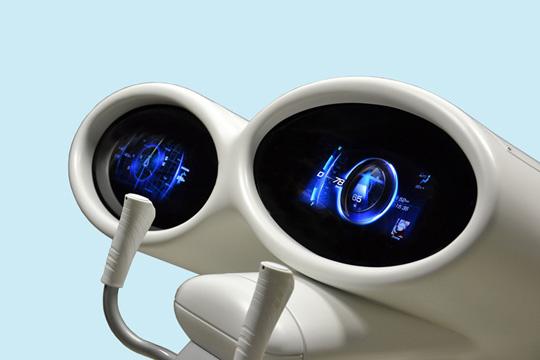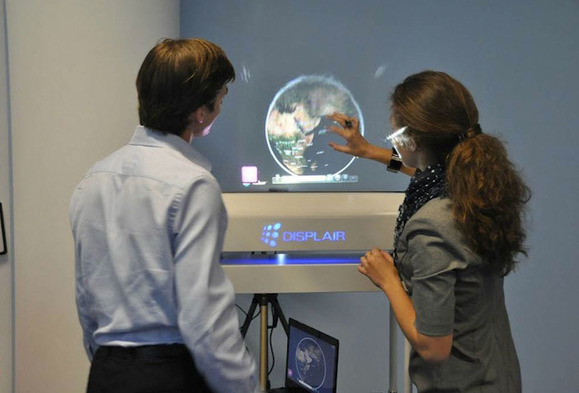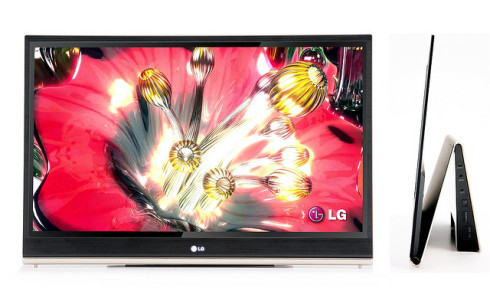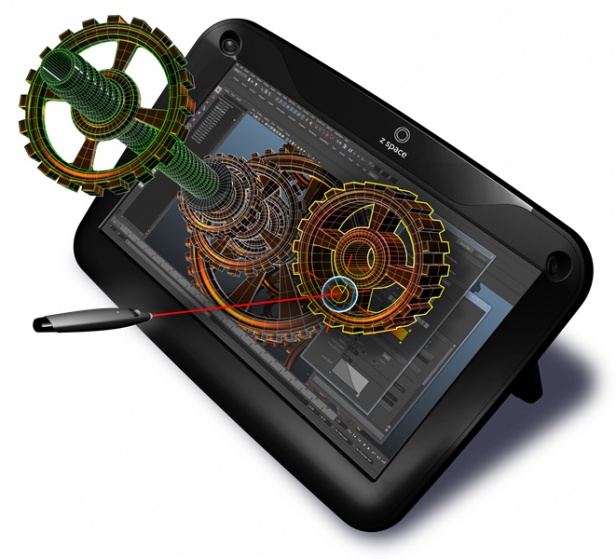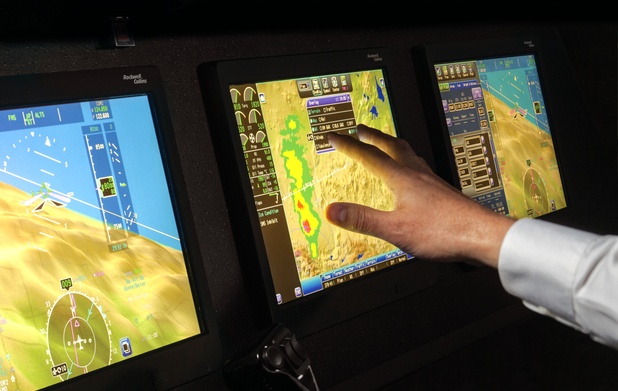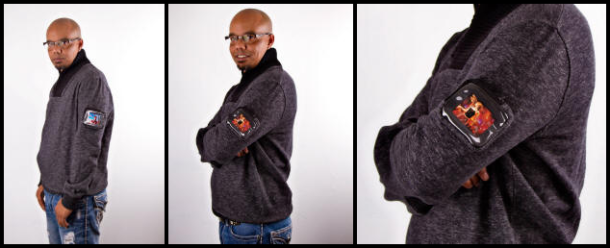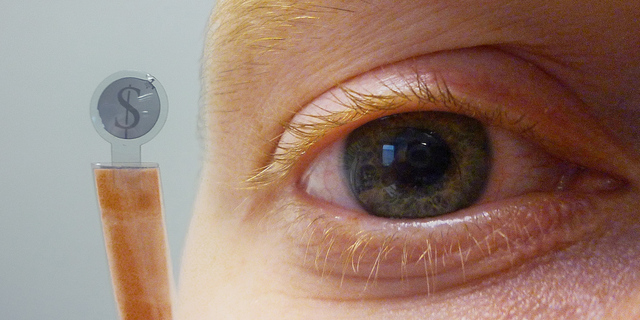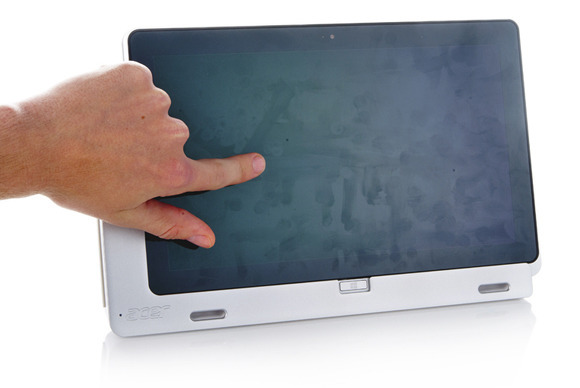Display Technology News Roundup 3.22.2013

Image via BGR
How the industry shift from miniturization to display quality blindsided Motorola "The spectacular success of RAZR in 2005 was a cruel red herring. It convinced Motorola that focusing on making slimmer phones instead of improving display technology and user interface software was the way forward. The RAZR models featured a 30% thinner chassis than rival phones — and a nightmarishly messy, menu-based software system. The demand spike for RAZR models was the indian summer of the miniaturization obsession that dominated the phone industry in 1992-2002. It misled many leading phone vendors to ignore their profound software user experience problems just before Apple entered the phone market and devastated the old guard." via BGR
New 3-D Display Could Let Phones and Tablets Produce Holograms "The HP display uses nanopatterned grooves, which HP researcher David Fattal, who led the work, calls “directional pixels,” to send light off in different directions. This requires no new moving parts, and the patterns are built into an existing display component, the backlight. A conventional LCD uses a sheet of plastic or glass that’s covered in bumps that scatter white light and direct it through the display’s color filters, polarizers, and shutters to the viewer. The new 3-D display builds on optics research demonstrating how the path, color, and other properties of light can be manipulated by passing it through materials patterned at the nanoscale." via MIT Technology Review
Growth slowing for TFT LCD glass substrate capacity ""With TFT LCD business maturing and growth slowing, leading manufacturers have begun to mitigate their business risk by converting production from TFT LCD glass to aluminosilicate glass," according to Tadashi Uno, director of materials and components market research at DisplaySearch. "With Corning Gorilla glass now dominant in the aluminosilicate glass market, it is critical for other TFT glass makers to find ways to jump on the cover glass trend to gain additional market share."" via DigiTimes
Fraunhofer HHI Conducts 3D Surgical Study "Test using the glasses-free display were not top ranked. Surgeons said it was comparable to working with the 2D screen. Dr. Ulrich Leiner, head of the Interactive Media – Human Factors department at HHI, noted that this display is a two-view glasses-free type with eye tracking used to present the stereo images to the surgeon based on their head/eye position. “While the glasses-free technology still requires some fine-tuning, we believe improvements will increase the popularity of 3D systems in operating rooms,” said Leiner. “The study demonstrated that 3D has become an option for surgeons as well. This will revive the discussion among skeptics. And now there is a need for tests in other medical disciplines,” concluded Leiner." via Display Central
Display database for engineers Search thousands of display panels by multiple characteristics and compare results side-by-side using the display database multisearch.
Warm 3D images using thermal displays "Stereoscopic or 3D displays—such as stereoscopic LED displays with polarized glasses or multi-layer 3D displays—allow a viewer to perceive the depth of an image to provide a richer viewing experience. Much research has been dedicated to determining how to offer blind people, or individuals without stereoscopic vision, the opportunity to experience this 3D effect. A possible solution is to use the sense of heat: employ three-dimensionally localized heat spots that provide a thermal sensation when an individual walks through the 3D image. Our research aimed to realize thermal and visual aerial signage, a technique that forms a 3D pattern composed of heat and light in the air, without any physical hardware at the position of the sign. These warm 3D images can be used, for example, to display advertisements alongside a footpath or side walk. In addition to seeing these signs, users can feel them when their faces touch the thermal images." via SPIE
LED LCD backlights explained "The so-called "blooming" that plagued early local-dimming LED LCDs has been greatly reduced. With the better TVs, there are few artifacts like these images. Instead, the processing errs on the side of safety, not allowing adjacent LEDs to get too different in brightness, so as not to have issues like you see here. The flip side of that is less "punch" in the image, as bright objects on an otherwise dark background don't appear as bright. " via CNET
LCDs and the lost art of photography "The immediacy of the LCD has changed the craft of photography. It’s made it so much easier to learn quickly, to grow and to take much greater chances and push the envelope much further. ...A little bit of the “magic” of photography -— has left us. There’s nothing quite like seeing a print come to life in the developer tray in the darkroom. Also, a certain type of discipline is instilled in you when you are faced with a 36-exposure roll and the cost associated with it, not to mention the cost of getting it processed and printed. These days I more often that not read 999 on the still camera’s LCD when a large CF Card is in place. Where’s the challenge in that? ...As the world continues to move faster and faster, as processors, resolutions, dynamic ranges, and terabytes keep increasing at an exponential rate, sometimes I think we could all do with a roll of 36 exposures." via Gizmodo
Do you have content to share with Display Alliance? Anyone can post press releases, white papers, commentary, videos, and more in the open section.
Nintendo Found Guilty of Patent Infringement with Stereo-3D Tech on 3DS "The auto-stereoscopic 3D display used by Nintendo with its 3DS portable video game console relies on pretty simple and well-known method. The S3D display uses a parallax barrier system to display 3D images. This parallax barrier, which has a series of vertical slits, is incorporated into an ordinary LCD to control the path of light reaching the right and left eyes, thus creating a sense of depth. Another name of this technology is called lenticular lenses tech. Since initial parallax barrier-based S3D LCDs had issues with the right reproduction of colors, many companies, including Nintendo, LG, Sharp and others implemented various additional technologies to eliminate the drawback." via Xbit Laboratories
Tech start-up of the week: LCD recycler ALR Innovations "ALR Innovations has pioneered a LCD screen recycling technology that consists of a fully automated machine that processes waste LCDs to remove the potentially hazardous materials they contain. Materials such as the mercury-containing fluorescent tubes and the liquid crystal panel. The machine processes 80 LCDs per hour, which offers the recyclers a fast and efficient process that is compliant with mandatory EU legislation, O’Donoghue said." via siliconrepublic
What If Google Glass Flops? "Thus, it doesn't matter whether Google sells 10 pairs of Glass or 10 million. What matters is that Google's involvement is already popularizing this kind of technology. This can be seen in the plethora of patent filings that have recently been filed by the likes of Apple (AAPL), Microsoft (MSFT), Samsung (SSNLF.PK), Sony (SNE) and others. In short, if Google doesn't get it right, someone else will. In fact, smartphone glasses may not even be the first hit. For example, Microsoft also has its sights set on gaming goggles. This demonstrates that computerized eyewear is ready to cross the chasm." via Seeking Alpha
Are you an engineer or have display expertise? Email jason@displayalliance.com to be featured in the interviews section.
Taiwan to hold touch panel display exhibition in August "The International Touch Panel and Optical Film Exhibition 2013 (Touch Taiwan 2013), one of the most important exhibitions for the display and touch panel industry in Asia, is scheduled to be held Aug. 28-30 in Taipei, the event organizers said Tuesday. Touch Taiwan 2013, to be held concurrently with the International Display Manufacturing Conference 2013 (IDMC 2013), will mainly showcase touch screens, panels, optical film, related equipment and materials." via Focus Taiwan
Do quantom dot displays pose challenges for OLED? "Quantum dots (QD) or semiconductor nanocrystals are a form of light emitting technology and consist of nano-scale crystals that can provide an alternative for applications such as display technology. This display technology differs from CRTs and LCDs, but it is similar to OLED displays, in that light is supplied on demand, which enables new, more efficient displays and allows for mobile devices with longer battery lives, according to recent reports from New Scientist. QD displays also consume lower power and have richer color than conventional OLED, claim some analysts. The analysts also state that the white light produced by quantum dots has high brightness and excellent color reproduction, raising its potential to replace the backlight unit (BLU) using the LED to form the "QLED." But has the technology proved itself in actuality?" via DigiTimes
Display as a Service receives Cebit Innovation Award "The software "Display as a Service" manages to display a movie on an unlimited number of screens so that it seems to be played on a big screen. "For this the monitors do not have to be connected by cables, nor do they need to have equal display diagonal, resolution and other technical parameters as is the case with common video walls," explains Alexander Löffler. He developed the method together with computer scientists from the German Research Center for Artificial Intelligence (DFKI). The reverse case of programming screens would be possible as well. "Picture-input from various sources, like several laptops in a conference room, can be presented simultaneously on a virtual screen wall given by the software," says Löffler. ...Moreover, the researchers from Saarbrücken are already working together with screen manufacturers. Modern devices meet the technical requirements for Löffler's solution. "In the future it could be possible that neighboring football fans would build their own public viewing big screen for the football World Cup with their private monitors," says Löffler, whose doctoral thesis is also supported by the Intel Visual Computing Institute in Saarbrücken." via Phys.org
How to use imaging colorimeters to improve OLED Display Production Testing "Imaging colorimetry-based testing systems have demonstrated success in improving quality and reducing production costs for LCD displays and LED display screens. Radiant Zemax has extended these proven techniques to OLED display production testing. This new white paper from Radiant Zemax describes OLED manufacturing challenges and solutions that can improve quality and yields for OLED displays from smartphones to TVs." via Vision Systems Design
Top 5 Notable Digital Display Trends at DSE 2013 "It seems that touchscreens are becoming the norm, to be expected everywhere in all walks of life. Which leads us back to smaller signage. We talked to Iles Guran, founder and CEO of Armodilo, one of many providers of iPad- and other tablet-based kiosks that displayed their products at the show. Guran pointed out that consumers are already comfortable with iPads and other tablets. And at a lot of retail locations, customers prefer using a device that offers a little more privacy than a large videowall. ...However, he was also quick to point out that his company's solutions are not intended to replace giant videowalls, nor is there a "one size fits all" approach for every retailer. In other words, smaller signage seems to have carved out a niche in the industry based on its own merits, but it's a niche that's already shown signs of increasing growth." via Digital Signage Connection
What is PHOLED? "The true benefit from PHOLEDs comes from the fact that they can be up to four times as efficient as fluorescent variants, which would mean substantially longer battery life for smartphones which used PHOLED based displays. Convention fluorescent LEDs only emit about 25% of the excitonic energy as light, with the remaining 75% wasted as heat. But the clever engineers behind the PHOLED display developed a phosphorescent material which could convert up to 100% of the electron’s energy into light. As a result of this very efficient energy conversion process, PHOLED based displays will also output substantially less heat than other screens. ...Not only do lower temperature displays help improve the lifespan of the LEDs, but it will also lower the entire temperature of your device, prolonging the lifespan of all the components inside." via Android Authority
New Technology May Allow for High Resolution Endoscopes as Thin as Human Hair "A new kind of endoscope technology with a factor of four image improvement over any previous design has recently been demonstrated by researchers from Stanford University. It may lead to flexible endoscopes producing about 80,000 pixels at a resolution of three-tenths of a micron, as compared to 10,000 pixels at three micron resolution for current state of the art. To achieve this the researchers developed a technique that uses a multi-mode fiber (MMF) to image the field under controlled illumination delivered through a spatial light modulator (SLM). An SLM is basically a liquid crystal display which can be used to modulate different features like the intensity, phase, or polarization of the light that is passing through each of its pixels." via MedGadget
The Touch-Screen Generation "“The war is over. The natives won.” So says Marc Prensky, the education and technology writer, who has the most extreme parenting philosophy of anyone I encountered in my reporting. Prensky’s 7-year-old son has access to books, TV, Legos, Wii—and Prensky treats them all the same. He does not limit access to any of them. Sometimes his son plays with a new app for hours, but then, Prensky told me, he gets tired of it. He lets his son watch TV even when he personally thinks it’s a “stupid waste.” SpongeBob SquarePants, for example, seems like an annoying, pointless show, but Prensky says he used the relationship between SpongeBob and Patrick, his starfish sidekick, to teach his son a lesson about friendship. “We live in a screen age, and to say to a kid, ‘I’d love for you to look at a book but I hate it when you look at the screen’ is just bizarre. It reflects our own prejudices and comfort zone. It’s nothing but fear of change, of being left out.”" via The Atlantic
What did you think about today's news? Leave a comment here and share your thoughts.
 Display Alliance
Display Alliance